Utah brought back the firing squad this week as a backup execution method, with some proponents saying it’s the fastest and most humane way of killing condemned inmates in an era when lethal injections have dragged on as long as two hours.
“It’s the only method we have in this country for which people are trained to kill,” said Fordham Law Professor Deborah Denno, an expert on capital punishment. “It appears the death is the quickest.”
Last summer, a federal judge wrote in an opinion that firing squad should probably replace the needle as the U.S. execution method — even though he thought another was more foolproof.
“The guillotine is probably best, but seems inconsistent with our national ethos,” Judge Alex Kozinski of the Ninth U.S. Circuit Court of Appeals wrote.
With states considering alternatives from the electric chair to the gas chamber, here’s a look at how long it takes to kill a condemned inmate with each method:
Guillotine: Less than a minute
Popularized during the French Revolution as a humane alternative to ax beheadings, the guillotine was last used in France in 1977, when convicted murderer Hamida Djandoubi was executed in Marseilles.
Death is not instantaneous but it may be as close as executioners get. A Dutch study on lab rats found the animals lost consciousness within four seconds and brain death occurred in a minute. A doctor’s 1905 account of a French execution, however, asserted that the prisoner’s eyes opened in response to his name for nearly 30 seconds after the blade came down.
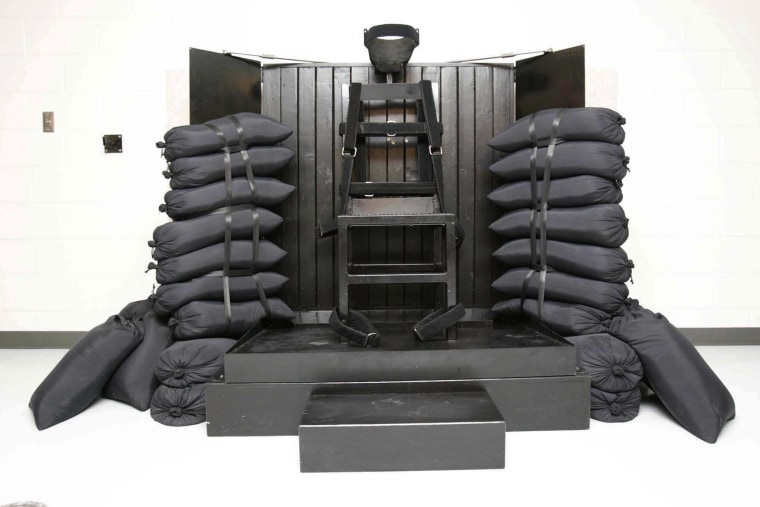
Firing squad: Less than a minute
Just three prisoners have been executed by firing squad since capital punishment was brought back in 1976. In 2010, Utah murderer Ronnie Lee Gardner, who chose the method over lethal injection, was pronounced dead two minutes after four bullets pierced the target over his heart.
Denno, the Fordham professor, says a 1938 execution in which doctors attached a monitor to the inmate showed that the heart’s electrical activity stopped within 30 seconds, with brain death following soon after.
She said that historically, there are accounts of people slowly bleeding to death when the bullets didn’t hit the heart but “those appear to be revenge killings” unlikely to happen in the modern age of executions.
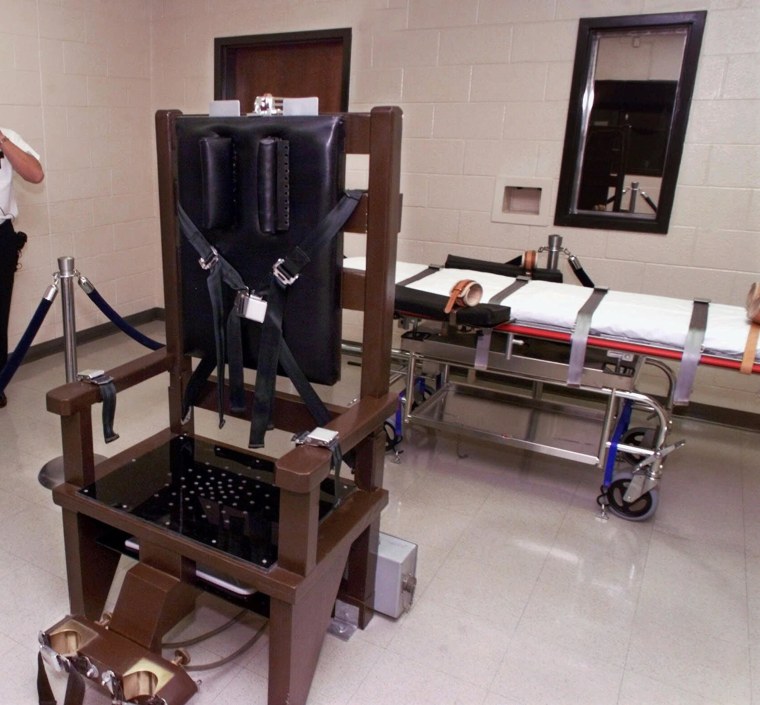
Electric chair: 2 minutes to 15-plus minutes
The last electrocution was in Virginia in 2013 when Robert Gleason Jr. was pronounced dead after two 90-second cycles of 1,800-volt current. In 2007, child killer Daryl Holton was pronounced dead in Tennessee after two 20-second jolts with 15-second pause in between.
But there have been a string of botched electrocutions that have lasted far longer. In Indiana in 1985, it took 17 minutes — and five cycles of current — to kill William Vandiver, who murdered and dismembered his father-in-law. In 1946, Louisiana teenager Willie Francis survived his first electrocution only to be put to death a year later.
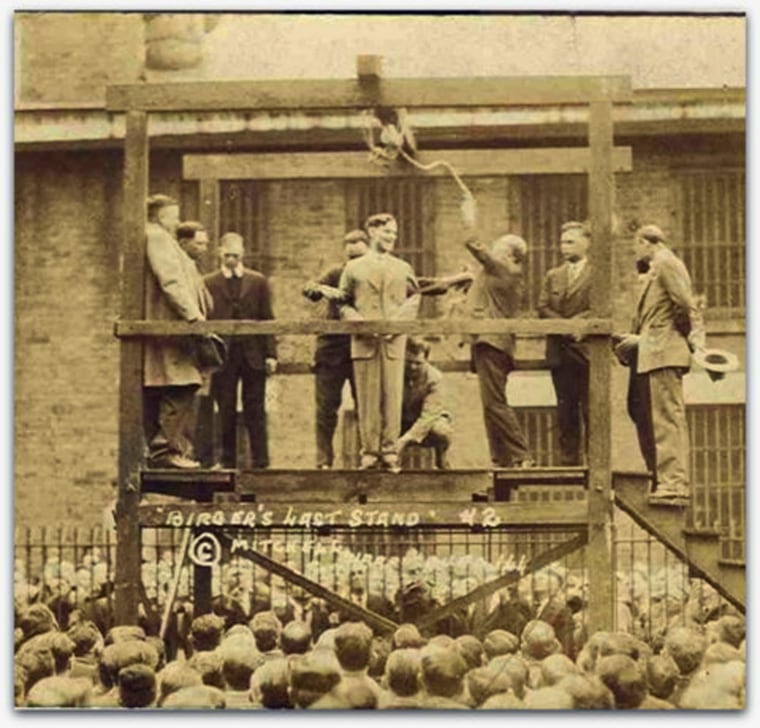
Hanging: 4 to 11 minutes
Three inmates have died by hanging since the U.S. Supreme Court brought back the death penalty. The last, Delaware double murderer Billy Bailey, chose the gallows over lethal injection in 1996 and was pronounced dead 11 minutes after he plunged through a trapdoor with a noose around his neck. Westley Dodd was confirmed dead four minutes after his hanging in Washington state in 1993, and Charles Campbell’s heart stopped six minutes after his 1994 hanging in the state.
In a dissenting opinion in Campbell’s appeal, U.S. Supreme Court Justice Harry Blackmun noted that under ideal circumstances, when a man is hanged “his vertebrae are dislocated and his spinal cord crushed; unconsciousness is immediate and death follows a short time later.” But he added that hanging “is a crude and imprecise practice, which always includes a risk that the inmate will slowly strangulate or asphyxiate, if the rope is too elastic or too short, or will be decapitated, if the rope is too taut or too long.”
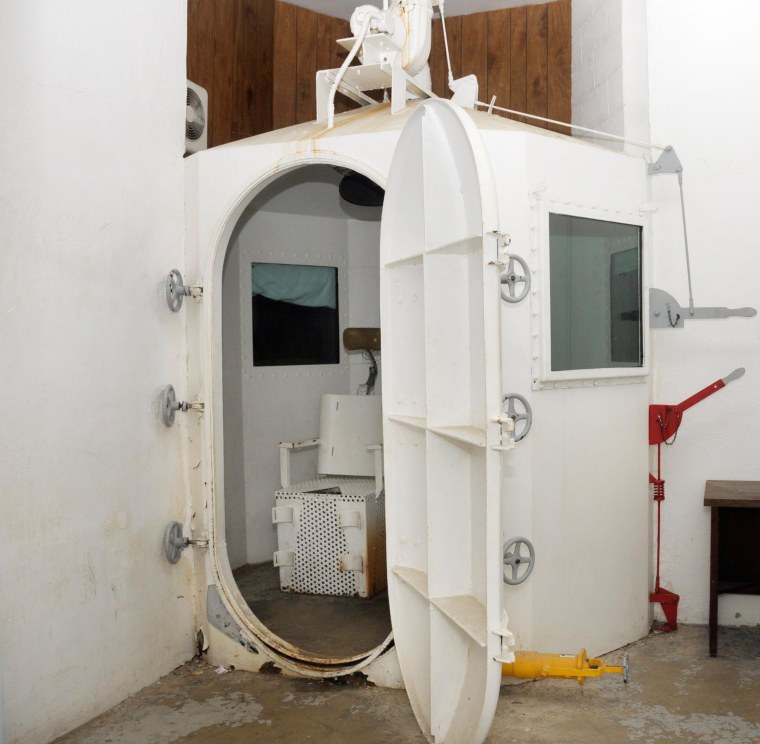
Gas chamber: 10-18 minutes
The gas chamber was used in only 11 executions between 1979 and 1999, largely because the deaths by cynanide were protracted and in some cases disturbing to watch. The last inmate to go this way, Walter LaGrand, chose it over lethal injection and choked and gagged for several minutes until he was pronounced dead 18 minutes after the poison pellets were dropped into acid, according to media witnesses in the Arizona prison.
In 1983, Mississippi officials claimed child rapist and killer Jimmy Lee Gray died two minutes after the gas started, but witnesses said he was still alive — moaning and banging his head against a pipe — when the viewing room was cleared eight minutes into the execution.
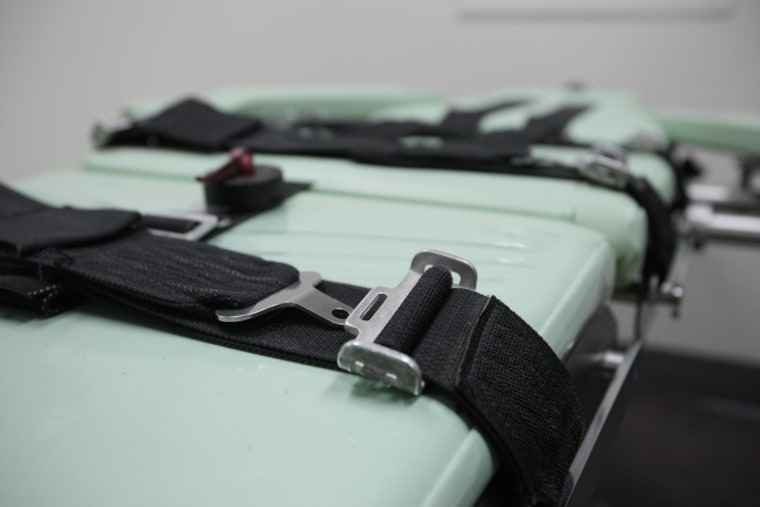
Lethal injection: 5 minutes to 2 hours
The length of lethal injections can vary widely due to the chemicals used, the physiology of the inmate and other complications. In cases where a short-acting barbiturate is followed by a paralytic and a heart-stopper, inmates have been rendered unconscious in seconds and pronounced dead in as little as five minutes. Due to drug shortages and bans, however, many states are using substitute chemicals that have led to protracted executions.
In April 2014, Oklahoma officials halted Clayton Lockett’s botched lethal injection after he regained consciousness, but he died anyway — 43 minutes after the procedure began. Three months later, Joseph Wood remained alive – gasping hundreds of times — for nearly two hours after Arizona injected him with a drug it had never used before.
A poll conducted for NBC News last May found that Americans support a range of execution methods if lethal injections are no longer viable.
While one in three said the needle is the only acceptable form of capital punishment, others were open to more primitive methods: 20 percent for the gas chamber, 18 percent for the electric chair, 12 percent for firing squad and 8 percent for hanging.